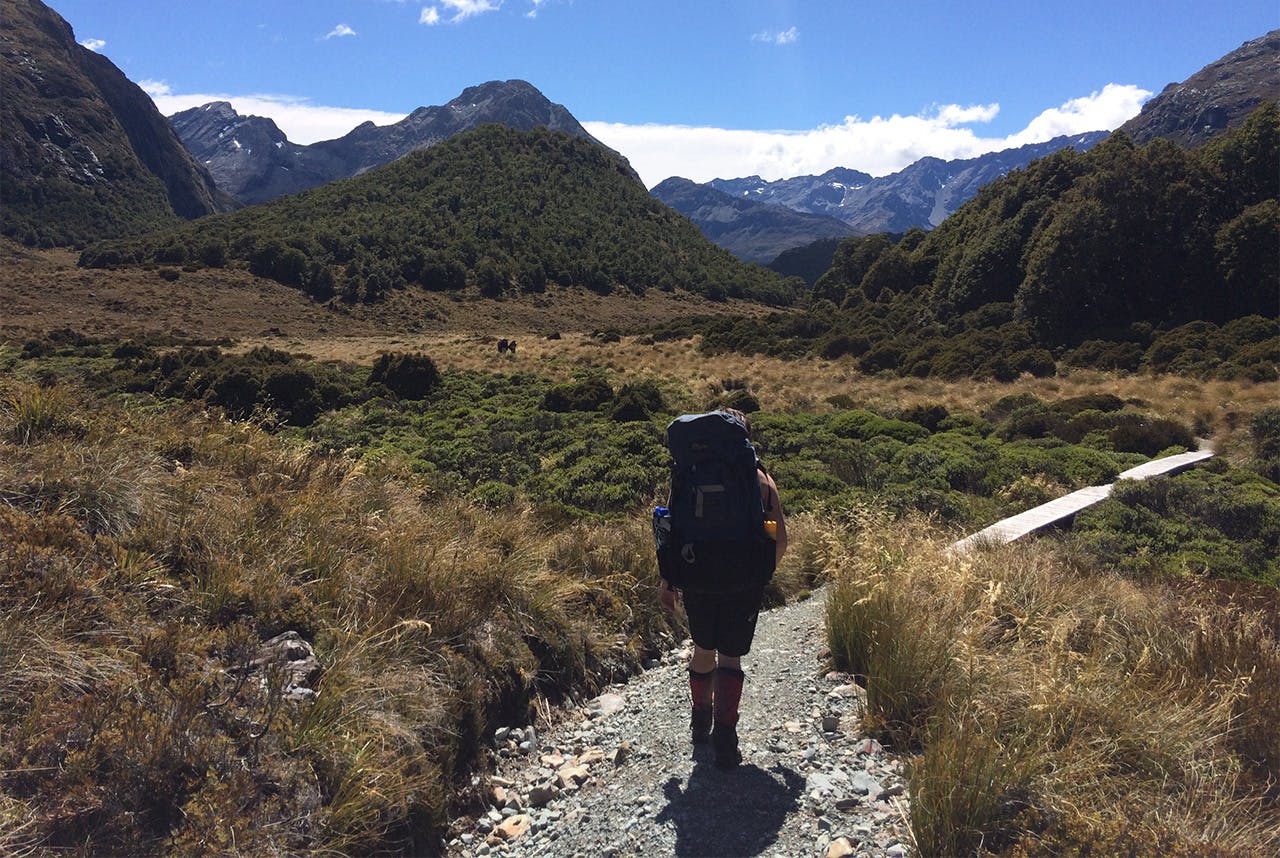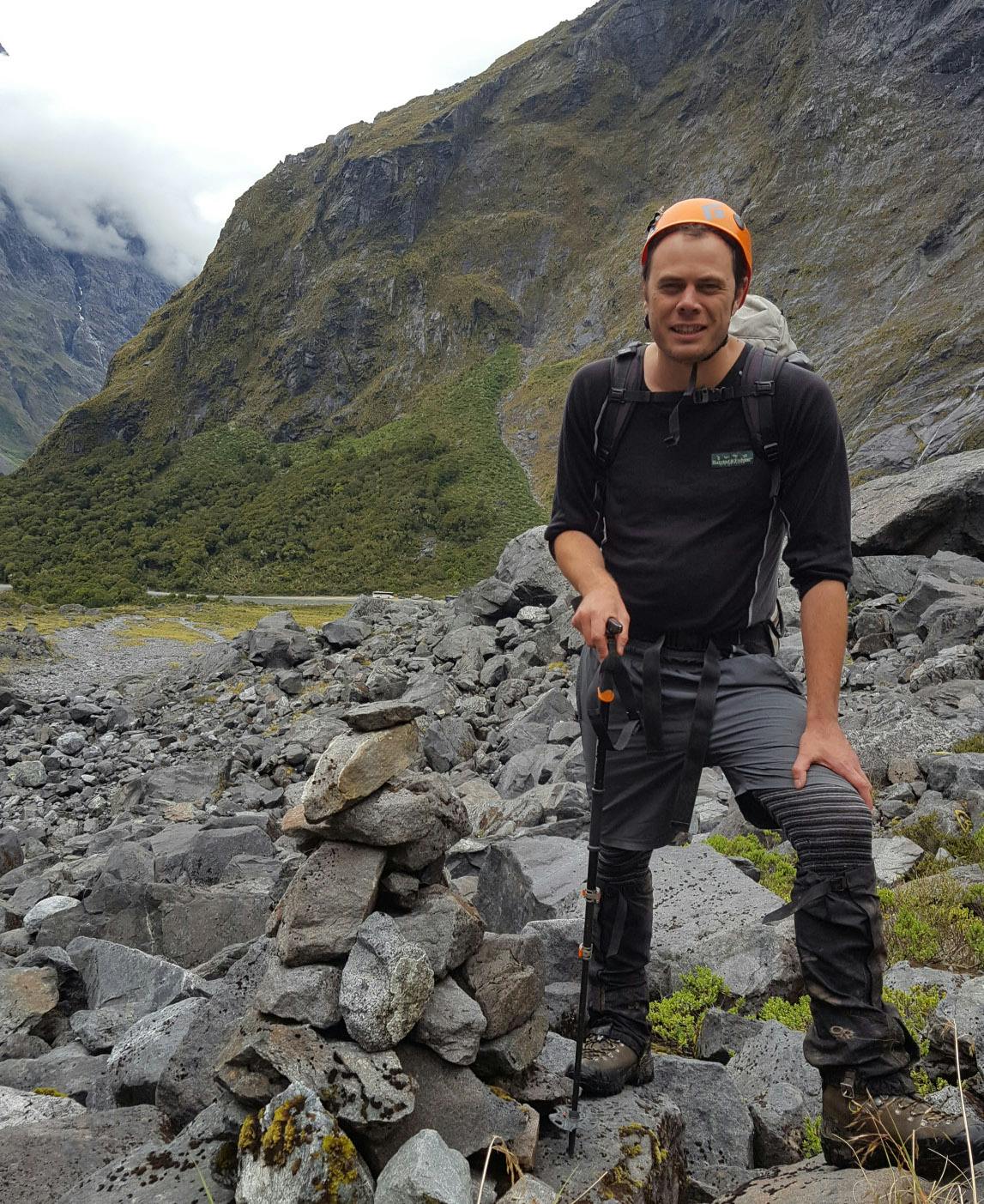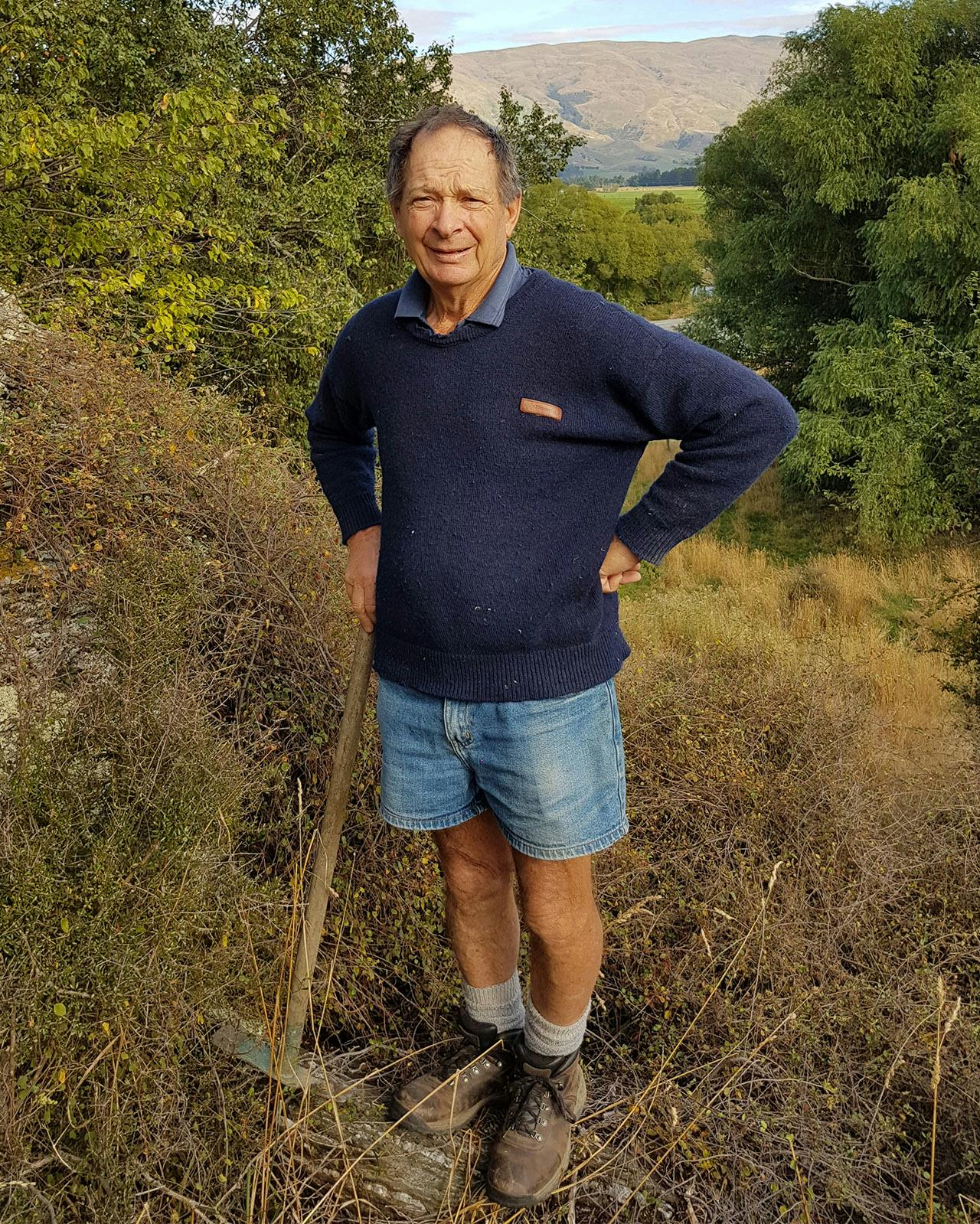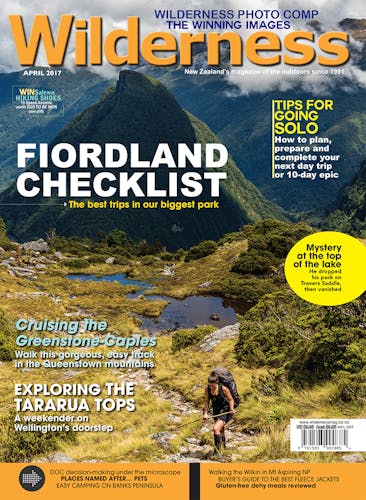Often under a scrutinous eye, DOC handles an extraordinary number of decisions about the conservation estate. Meghan Walker looks at how these decisions are made, and if there’s a need for greater oversight
Planning is not sexy, Federated Mountain Clubs president Peter Wilson admits.
But, with the massive growth in tourism to this country and the increased pressure these visitors have put on the conservation estate, he’s advocating for changes to the way our parks are managed.
The Department of Conservation has weathered its fair share of complaints from the tramping community. Recent issues causing a stir include the decision to spend $400,000 to seal the Coromandel’s Cathedral Cove Walkway, the Caples Track upgrade, and the controversial decision in 2016 to increase daily helicopter landings from 10 to 80 on the Ngapunatoru Ice Plateau in Fiordland National Park.
But it’s not just recently such decisions are being made. Back in 2013, DOC ignored the Mt Aspiring National Park management plan to grant a concessionaire more bed nights – a nightly increase from 24 to 40 – on the Routeburn Track. That decision was called ‘nonsense on stilts’ by the Ombudsman, but was left intact.
For Wilson, it comes down to his concerns over the lack of transparency and oversight in DOC’s decision-making process.
“DOC’s a lot like the All Blacks. People want it to succeed, but when it doesn’t it’s prone to fairly heavy criticism very quickly,” Wilson says.
He thinks decisions that affect people’s enjoyment of, or access to, the outdoors require much greater oversight than is currently customary.
To understand how DOC makes decisions requires a headfirst dive into the nitty gritty workings of the department.
One of the more controversial elements of DOC’s functions is in its concessions process.
When a concession is submitted, DOC permissions advisors based around the country process the application. As they conduct their review, they’re keeping an eye out for ‘triggers’ – a set of criteria that suggests the application should be sent to the conservation board for comment. Each of the country’s 15 regional conservation boards has its own triggers. For example, if a concession term spans 10 years or more, it would likely be forwarded to the regional conservation board for review. Other triggers might be around the type of activity in the concession.
“The board may say, because a [concession] provides exclusive occupation of conservation land, we wish to see all applications that include this,” DOC permissions and statutory land management manager Deidre Ewart explains. Concessions for a new type of activity, such as the use of drones, or concessions which may be inconsistent with a park’s conservation management strategy, are also typically sent to the boards for comment. The board typically has about a month to provide feedback to DOC, which is considered and will form part of the report prepared for the ‘decision maker’ – typically the corresponding area’s operations manager.
“The general premise is that [decisions for concessions] are exercised at the lowest level appropriate,” explains Ewart. “So most decisions are made by operations managers. Depending on the complexity or the term of the concession, then they elevate the decision to operations directors.”
The decision maker then moves to approve – maybe with conditions – or to decline an application.
Whether the decision can be made by the operations manager is sometimes determined by the operations manager themselves.
“They may well be involved at a local level in meetings and discussions about the project or proposal, and therefore it’s not appropriate for them [to decide on a concession],” Ewart says. While operations managers will often self-regulate and make that call themselves, it’s also possible that an operations director may choose to elevate the delegation. Permissions advisors too have the ability to determine the decision maker, especially if they have a good understanding of potential conflicts of interest involved.
“It’s self-regulating, but with oversight, in the sense that ultimately, the director of that area is accountable,” says Ewart. “They need to have a good understanding of work that’s going on in their region.”

The Caples Track upgrade – making it easier to walk and removing one hut – was another controversial project. Photo: Meghan Walker
Ewart says the system works.
“If it ever gets to the place where we feel like we have to make a tough call, then it’s a clear sign that the decision needs to go elsewhere. Even if there’s a perception that there could be an issue, then the decision is moved.”
For example, Ewart says, in the case of the Ruapehu Alpine Lifts application for the Turoa Ski Field license – a 60-year concession – the local operations manager is heavily involved in discussions around the new license. Because the operations director is also involved, engaging with treaty partners, they’ve decided the final decision will be made by DOC’s deputy director general.
“That frees up the staff to fully engage in the process to ensure we’re getting a good outcome,” Ewart says.
Wilson, however, finds fault with this system.
“That decision-maker’s decision is usually final. There’s no review, no publishing of the decision, no analysis of precedent, and it’s normally made by the person at the lowest level, which doesn’t always mean the most qualified.” Wilson says. “The system needs to be updated and modernised.”
Concession applications are rarely declined, Ewart says, because the department is working very closely with concessionaires to help them understand the boundaries for their proposal, usually referring to national park management plans and conservation management strategies, drafted in part by the regional conservation boards.
Funded by DOC and staffed by minister of conservation-appointed members, the boards’ primary functions are to draft long-term plans and help advise on concessions.
The boards work with department planners to submit national park plans and strategies to the New Zealand Conservation Authority (NZCA) for approval.
“They are in some ways a handshake between the department and the community on conservation management,” NZCA chairperson Warren Parker says.
Also comprised of minister-appointed members, the NZCA is a group of 13 who meet six times a year to review park plans and conservation strategies, and investigate national conservation issues.
Parker says the scope of the authority’s activities is vast. While their primary functions are to review and sign off on plans, they’re also involved in investigating and advising on a host of other issues. One current issue Parker says they’re investigating is whitebait fishing; looking into concerns of loss of habitat and overfishing.
“There’s a lot of interest around growth in tourism numbers and the pressure on DOC infrastructure and tracks and reaching or breaching their capacity. Finding ways to recover those costs in a practical and acceptable way is something else we’ve been working on,” Parker says.
The NZCA will advise DOC on their findings and recommendations, however, DOC still has the final say on the issues the NZCA will help investigate.
Parker says while they can provide a certain perspective, he accepts that DOC might not follow their advice. “That’s always understood. You can provide a perspective, but there’s other information that they may be taking into account in making final decisions. That’s a common process in governance, where different perspectives are brought to the table. Some of those perspectives, even though they might seem compelling in their own right, don’t get adopted,” Parker says.

Peter Wilson would like to see more oversight in DOC’s decision-making and planning. Photo: Callan Cooper
FMC’s Peter Wilson suggests that the NZCA’s role be expanded to review DOC’s decisions upon request – anything from infrastructure spending, concessions, or development – in order to provide more checks and balances to the department. He proposes a subcommittee of the authority that could provide that oversight, and because such oversight is provided for in the Conservation Act, there’s nothing stopping DOC from doing it.
“Expand its role. Give it staff, give it a budget, and give it a job of reviewing and auditing DOC, bringing in some independent oversight into DOC’s decision-making,” Wilson says.
For Wilson, it’s a question of ‘who guards the guards?’
“There’s no functioning independent system of oversight; it’s all internal to DOC, with a couple of exceptions: the national park management plans and conservation management strategies, signed off by conservation boards, appointed by the minister of conservation, and in turn signed off by the New Zealand Conservation Authority.
“My perception is that even those bodies, which add a small component of independence to the system, have been largely captured by the department’s own planners. What it means is you achieve a groupthink around a particular idea or problem, and it becomes very hard to exercise influence over the system from outside. And the system itself becomes impossible to self-reform – it doesn’t learn from its mistakes,” Wilson says.
“Expanding the NZCA’s role could introduce some external oversight and rigour, knowing that decisions can and will be monitored and reviewed.”
Pat Garden is the chair of the Otago Conservation Board. He’s been in his role for a few years, and is currently deep into the planning phase for the Fiordland and Mt Aspiring National Park management plans.
Garden says that the current oversight of the authority is appropriate, but that the conservation boards play a vital role in helping DOC make decisions.
“If the relationship between boards and the department is appropriate, boards can be particularly influential in the decision making process, not only at the local level but at the wider regional and national level,” Garden says. He points out that the four southern conservation board chairs meet a couple times a year with DOC.
“It’s a frank and robust face-to-face discussion and I am confident that advice given in that forum is taken seriously by the department,” he says.
In Garden’s tenure, the recommendations provided by his regional board have been largely accepted by DOC. However, he recognises that wasn’t always the case, referencing the decision by DOC in 2013 to allow a significant increase in the number of overnight guided walkers on the Routeburn Track. In that case, DOC’s decision directly conflicted with the Mt Aspiring National Park management plan.
DOC claimed ‘exceptional circumstance’ prompted them to grant the concession. According to Ombudsman Ron Paterson’s report, DOC director of planning Marie Long had jointly approved the concession because ongoing monitoring would ensure that adverse effects of the approval would be “appropriately avoided, remedied or mitigated”.
Paterson ruled it an unreasonable approval. “There is no credible basis on which to conclude that the circumstances here were so unusual or out of the ordinary to be ‘exceptional’,” he said in his report.
Ewart says the department used the situation as an opportunity to review and clarify the use of ‘exceptional circumstances’. She says DOC now provides “more guidance and support to staff around what constitutes exceptional circumstances – when it’s appropriate to recommend it be used”.
Wilson says the Routeburn concession and subsequent review by DOC raised questions of transparency.
“Whilst DOC made changes to their exceptional circumstances criteria, these were never published and made publicly available, and then a year later, they used a ‘research clause’ to increase helicopter landings from 10 to 80 on the Ngapunatoru plateau in Fiordland,” Wilson says. “So there are still clearly issues that need to be resolved, and I think the best way is to bring some more checks and balances into the system.”
Garden says, the Otago board’s relationship with DOC became strained after the Routeburn concession. “There was quite a difference of opinion between the board and the department,” he says. And though the relationship has since recovered, “it does require the board be very conscious of its role as set out under legislation. We need to refer all the time to what the legislation expects of the board, to make decisions based on that legislation, and at the same time, ensure we reflect the expectations of the public.”
Garden has a clear approach for how to make recommendations that are in line with the Conservation Act, while at the same time balancing a tourism industry lumbering through the conservation estate like a teenager who’s hit a growth spurt.

Pat Garden says balancing tourism demands and conservation is a constant issue.
His bottom line? Aim to have a “common sense” approach of what the public would expect.
“The level of activity that’s appropriate in a national park is a very important issue for us all. Under the Act, there’s an expectation that our national parks will have the intrinsic values preserved in perpetuity. As tourism activity increases we always have to be mindful and say, ‘how will that affect those intrinsic values?’”
In Garden’s views, intrinsic values are natural values.
The Otago Conservation Board hosted a forum in Queenstown last year to gain input for how to draft the national park management plans. Garden says they asked participants if there should be limits to activities within the park.
“There was a wide divergence of views. Some said it’s a huge area and there’s capacity for far greater activity, while those at the other end of the spectrum said we have already reached the limits of activity in the parks,” says Garden. “These concerns were often expressed in the context that both Fiordland and Mt Aspiring National Parks form part of the Te Wahipounamu – South West New Zealand World Heritage area, which gives them an international significance where the natural values must not be compromised.”
Around the country, from local offices to the most senior levels of management, DOC staff are trying to balance conservation values with responsibilities to address the added pressure from growing tourist numbers and the impact those visitors have on the backcountry and DOC’s infrastructure.
And the public is taking note: NZCA chair Parker says he’s seen a shift in recent years, where public engagement in the conservation estate has been heightened.
“It’s part of the spirit of New Zealand. The beauty of the landscapes and the ability to go out and enjoy the backcountry and access walking tracks,” Parker says, adding that the promotion of the Great Walks and the Predator Free 2050 initiative are also driving factors in increasing public engagement.
“There’s a growing appreciation that conservation tourism is a really big part of the New Zealand economy,” Parker adds. “The way that conservation and nature is managed is going to be very important in terms of sustaining that over the long term. We have to make sure we look after what is, to a large extent, the backbone of the tourism industry.”
In considering the various tasks of the NZCA – signing off on park and conservation management plans, and advising DOC on a whole host of other issues – Parker says the authority has “a very clear plan in terms of what we want to look at, and help the department be as effective and efficient as it can.
“We’re looking at how we can streamline planning functions – such as the conservation strategies and the park plans – to make them more efficient and meaningful.”
Ultimately, the hope expressed by Wilson is that the department learns from its errors and makes decisions that fully adhere to the ethos of DOC; to protect the conservation estate.
“It comes down to consistency and transparency,” Wilson says. “Environmental justice has to be seen to be done, and DOC has to be seen to learn from its past mistakes.
“We haven’t seen evidence of that yet.”







